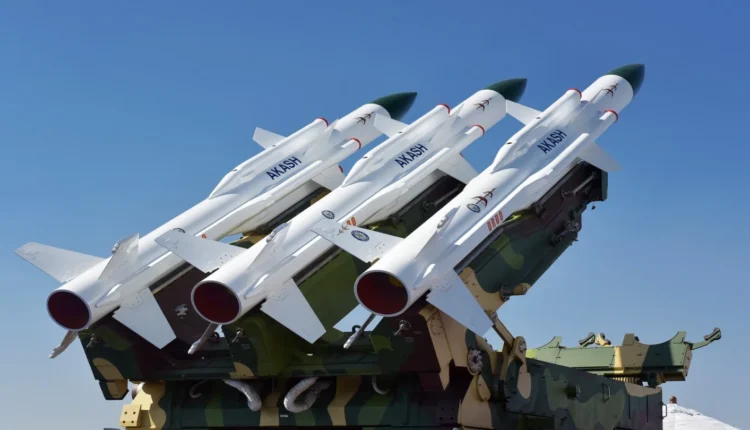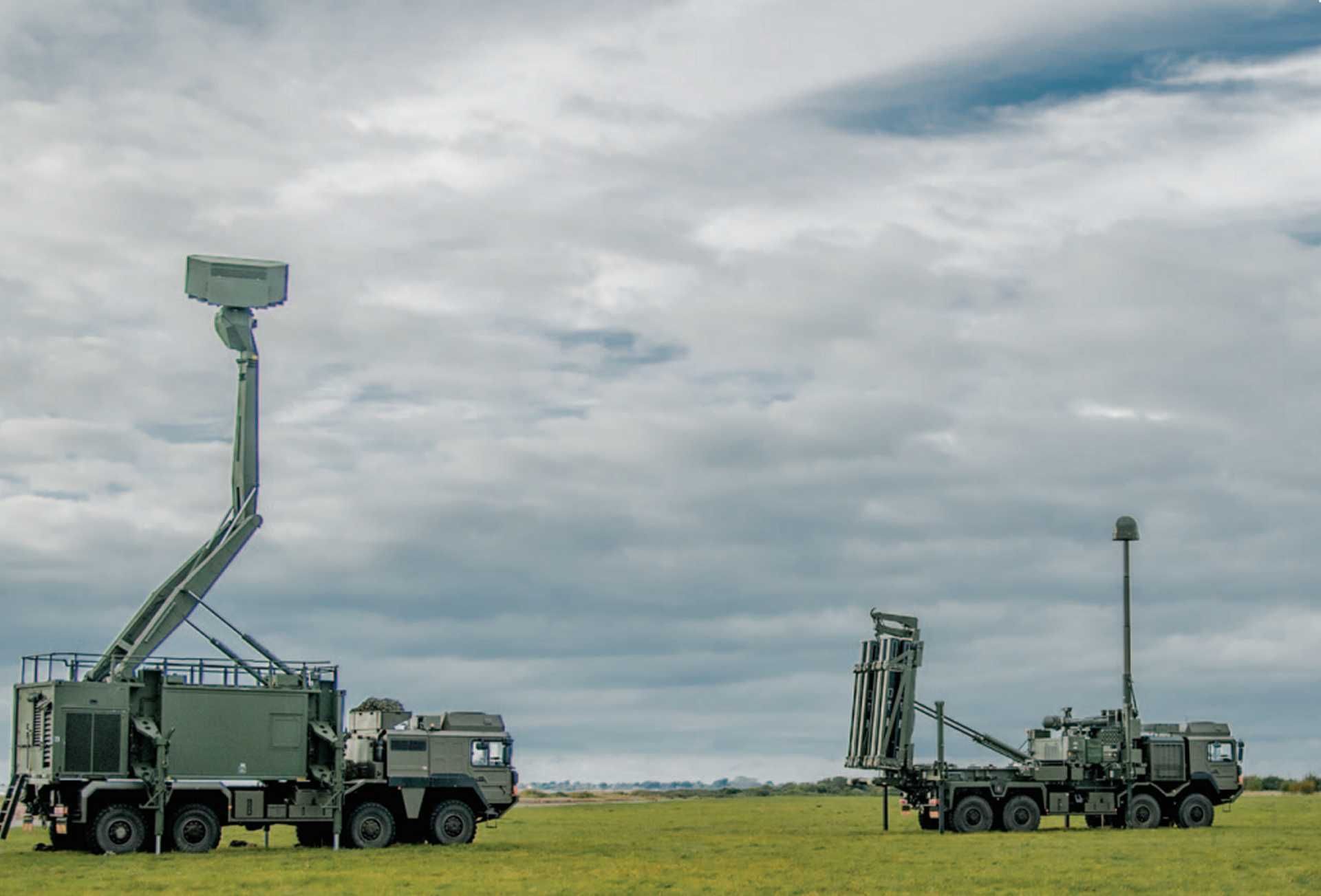Brazil Ditches India’s Akash for NATO-Proven EMADS in USD 1 Billion Air Defence Pivot
Why Brazil’s switch from Akash to EMADS highlights India’s uphill battle to break into the global air defence market.

In a development that deals a stinging blow to India’s aspirations for self-reliance in defence technology, Brazil has reportedly frozen negotiations to acquire the indigenous Akash surface-to-air missile system, citing its lacklustre performance in key operational parameters.
Instead, the South American giant is now shifting its gaze towards Europe’s trusted defence powerhouse, MBDA, and is said to be deep in talks to bring home the Enhanced Modular Air Defence Solutions, better known across NATO lines as EMADS.
According to multiple reports citing The Rio Times, the Brazilian Army is actively negotiating a contract that could be worth close to USD 1 billion (approximately RM 4.7 billion), marking one of Latin America’s biggest air defence investments in years.
At the heart of the deal is MBDA’s CAMM-ER (Common Anti-Air Modular Missile – Extended Range), a next-generation interceptor designed to neutralise the full spectrum of modern aerial threats from agile fighter jets to low-flying drones and cruise missiles.
Indian sources, echoing local media, note that Brazil found the Akash system “less suited” to neutralising high-speed, low-altitude threats that are increasingly common in hybrid warfare scenarios, including drone swarms and precision-guided munitions.
This shift by Brazil underscores a growing dilemma for India’s ‘Atmanirbhar Bharat’ defence drive, as it races to convince foreign militaries that homegrown systems like Akash can match, or at least complement, proven NATO-standard solutions.
While Akash has long been marketed as India’s frontline medium-range SAM to protect key assets near sensitive borders, it faces a tougher pitch on the export stage when rival systems offer enhanced range, faster deployment, and built-in interoperability with Western C2 networks.

The CAMM-ER, for example, pushes the engagement envelope to 40–50 km, significantly outclassing the baseline Akash’s 25–30 km kill zone.
This extra reach is made possible through a new high-energy rocket motor that boosts speed and extends the time-on-target window — a critical edge in modern engagements where seconds count.
More telling is the CAMM-ER’s ‘soft vertical launch’ method, which uses a gas ejection system to launch the missile before its main motor ignites, minimising the launcher’s thermal signature and enhancing survivability against enemy counter-battery fire.
Operationally, CAMM-ER’s active radar seeker allows for true ‘fire-and-forget’ performance, tracking and destroying incoming threats autonomously in the terminal phase — a game-changer in contested electromagnetic environments.
By contrast, the Akash relies heavily on its Rajendra 3D Passive Array Radar for command guidance, which while robust in open terrain, has been criticised for sensitivity to clutter in dense or mountainous landscapes.
To its credit, India’s DRDO has not stood still.
The new Akash-NG (Next Generation) variant is designed to close the gap with upgrades like an active radar seeker, AESA radar, and a dual-pulse rocket motor, boosting interception probability and range up to 40 km.
Yet the fact remains: EMADS is combat-proven in NATO’s demanding operational environment.
The British Army integrated EMADS into its Land Ceptor programme in 2018, positioning it as a mobile, quick-reaction shield for forward-deployed assets and high-value infrastructure.
The beauty of EMADS lies in its modular DNA.
From the outset, MBDA envisioned a system that can be rapidly reconfigured to handle evolving threats, mission profiles, and battlefield conditions.
Each battery combines the CAMM-ER’s vertical launchers with multi-role AESA radars — often Saab Giraffe or Thales platforms — delivering 360-degree detection, tracking, and kill coverage.
This gives commanders unmatched flexibility to plug EMADS into national or NATO air defence grids, using Link 16 or local C2 data chains for real-time interoperability.
For Brazil, whose growing defence posture now stretches from Amazonian rainforest airfields to sprawling coastal bases, that seamless integration offers a level of reassurance Akash cannot yet replicate.
EMADS’s ‘plug-and-play’ architecture also means future upgrades are far less disruptive.
Missile stocks, launcher configurations, and radar options can all be scaled or swapped based on threat evolution — an operational and financial boon for countries wary of single-vendor lock-in.
Meanwhile, India’s domestic variant remains the backbone of layered defence on its sensitive western and northern borders.
Akash’s rugged tracked or wheeled launchers can move with frontline armour formations, offering mobile air cover deep inside theatre.
In recent exercises, the system has shown credible performance in intercepting simulated low-level cruise missiles — a key requirement for India’s Integrated Air and Missile Defence (IAMD) posture.
Dozens of Akash squadrons now protect vital air bases and high-value assets near the LAC with China and the LoC with Pakistan, filling the gap between point-defence systems like Spyder SR and high-end exotics like the S-400 Triumf.
Indian defence planners know the stakes.
A reliable domestic SAM system means insulation from the whims of foreign sanctions, tech embargoes, or political strings that often come with imported hardware.
It’s a strategic lever New Delhi will not abandon lightly.
But as Brazil’s pivot shows, export markets weigh capability and track record above slogans.
EMADS’s appeal goes beyond just range or seeker tech — it’s a proven NATO-grade asset that slots neatly into multi-layered kill chains, a factor that can swing decisions when taxpayers demand battlefield guarantees.
For India’s defence industry, the loss of a billion-dollar prospect in Brazil comes as a wake-up call.
In a region increasingly alive to the threat of cheap loitering munitions, kamikaze drones, and stand-off glide bombs, the bar for what counts as ‘combat-proven’ has never been higher.
It’s a timely reminder that the next phase of Atmanirbhar Bharat cannot stop at indigenous design alone — it must show the world that Indian missiles can stand shoulder to shoulder with Europe’s best when the radar lights up.

